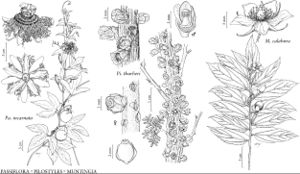Difference between revisions of "Muntingiaceae"
FNA>Volume Importer |
FNA>Volume Importer |
||
| Line 37: | Line 37: | ||
|family=Muntingiaceae | |family=Muntingiaceae | ||
|illustrator=Linny Heagy | |illustrator=Linny Heagy | ||
| + | |illustration copyright=Flora of North America Association | ||
|distribution=Fla.;Mexico;West Indies;Central America;South America;introduced also in Old World. | |distribution=Fla.;Mexico;West Indies;Central America;South America;introduced also in Old World. | ||
|introduced=true | |introduced=true | ||
| Line 43: | Line 44: | ||
|publication year= | |publication year= | ||
|special status= | |special status= | ||
| − | |source xml=https://jpend@bitbucket.org/aafc-mbb/fna-data-curation.git/src/ | + | |source xml=https://jpend@bitbucket.org/aafc-mbb/fna-data-curation.git/src/f50eec43f223ca0e34566be0b046453a0960e173/coarse_grained_fna_xml/V6/V6_334.xml |
}}<!-- | }}<!-- | ||
-->[[Category:Treatment]] | -->[[Category:Treatment]] | ||
Revision as of 22:04, 16 December 2019
Shrubs or trees, to 12 m. Leaves alternate (distichous), petiolate, stipitate; stipules subulate or filiform [absent or peltate discs]; blade palmately veined, seldom lobed, base often asymmetric, margins serrate, surfaces hairy, hairs usually mixed: unicellular and multicellular, simple with some setiform and some glandular, branched, and stellate, often ± tangled, forming tomentum. Inflorescences: flowers solitary or in clusters of 2–3+, usually supra-axillary; involucel absent [bracteoles ca. 15, filiform]. Flowers: sepals caducous [persistent], (4–)5(–7), valvate, basally distinct or weakly connate; petals caducous, (4–)5(–7), distinct; nectaries absent; stamens 10–75+, filaments distinct or bases connate; ovary superior [inferior], 5–7-carpellate; style 1 [0]; stigmas 5–7, ± decurrent. Fruits baccate, ± spheric. Seeds [25–]100–200+.
Distribution
Fla., Mexico, West Indies, Central America, South America, introduced also in Old World.
Discussion
Genera 3, species 3 (1 in the flora).
Plants included in Muntingiaceae (in the sense of C. Bayer et al. 1998) have been treated in Eleocarpaceae, Flacourtiaceae, or Tiliaceae. Dicraspidia Standley (Central America and Colombia) and Neotessmannia Burret (Peru) are relatively poorly known.
